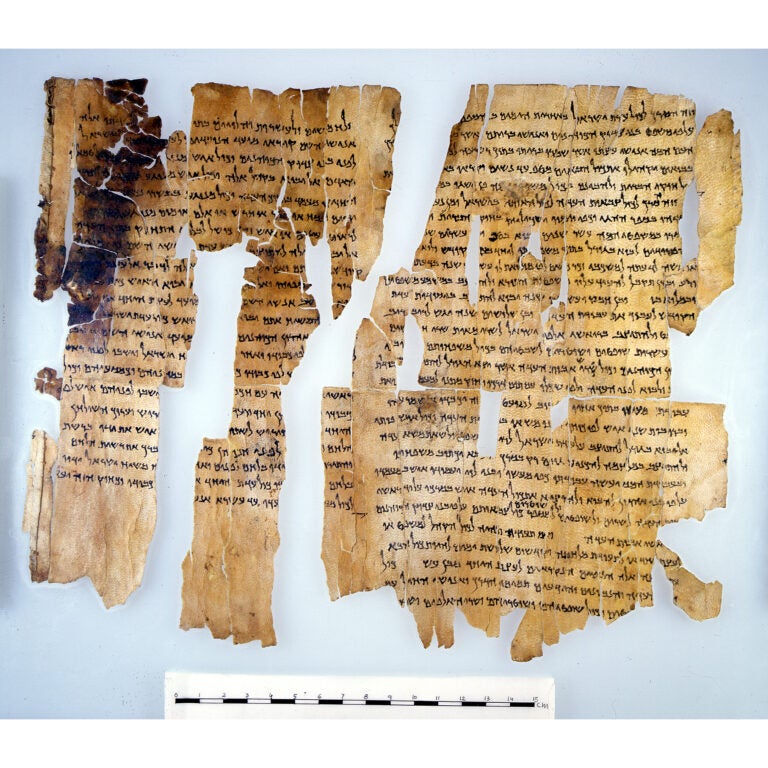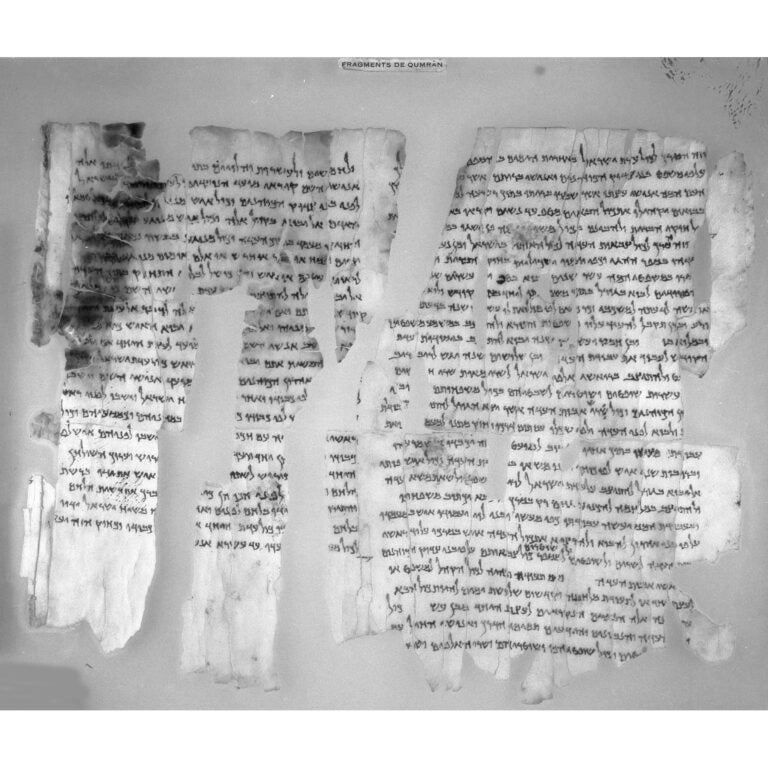The Rule of the Congregation (or Messianic Rule, 1Q28a [1QSa])
The Rule of the Congregation was found in Cave One near the site of Khirbet Qumran near the shores of the Dead Sea in 1949. It was originally included in a larger scroll called the Community Rule (or Manual of Discipline, 1QS), but is a complete work in itself. It is intended to set down rules for behavior in the “congregation of Israel” in the “last days,” as they prepare for a war with foreign nations, led by a messiah. The priests, or “sons of Zadok,” are described as the highest leaders in the community, although the text also talks about the “Messiah of Israel.” The manuscript is usually dated to the middle of the first century B.C.E. The rules of life that are set down are meant for everyone who has “kept the covenant,” men, women, and children. After a brief introduction, rules are given for males from youth to full adulthood. They are to be taught beginning when they are children, and at the age of twenty become full members of the community. At this time they are also old enough to fight in the holy army. As they grow older they are expected to increase in responsibility and be given higher and higher positions of leadership, depending upon their strength. Special duties are given to the men of the tribe of Levi (the Levites) and they are to be under the authority of the sons of Aaron (the priests).

As in the biblical book of Leviticus, those who have some kind of impurity, or physical defect, are not to take part in the community council, nor are they to have any leadership role.
The text ends with a description of the “community council” and instructions for the drinking of bread and wine together. The first to enter “the assembly” is the chief priest and other priests, then the “Messiah of Israel” (in other words, the political leader) together with the chiefs of the clans of Israel, the wise and the learned men. When they drink the new wine, the first to take the bread and wine should be the high priest, and then the Messiah of Israel. This is how each meal should be eaten.
It is important to realize that the figure of the Messiah here does not have the religious significance that it does in Christian literature. The word Messiah comes from the word “to anoint” and both kings and priests were anointed in ancient Israel. The Messiah of Israel is therefore simply the king, the ruler, and his status is lower than that of the high priest. This arrangement is similar to that found in Ezekiel 40-48, where the main leadership in the restored land and temple is given to the priesthood. The secular ruler (or prince) has a place, but is under the authority of the religious leaders, and is not nearly as powerful as in the days prior to the exile in 58 BCE.

Articles
- Discovering the scrolls The finding of the Dead Sea Scrolls.
- Testimonia An anthology of Bible verses concerning the Messiah.
- Isaiah Pesher An ancient commentary on the book of Isaiah.
- The Rule of the Congregation Rules for living in the Messianic age.
- Copper Scroll A list of buried treasure.
- Qohelet Fragments from the Book of Ecclesiastes.
- The Words of Moses A document using themes from the book of Deuteronomy.
Article Categories
Non-Biblical Ancient Texts Relating to the Biblical World: Non-biblical inscriptions and documents from ancient times that improve our understanding of the world of the Bible.
Biblical Manuscripts: Images and commentary on ancient and medieval copies of the Bible.
Dead Sea Scrolls: Images and commentary on selected Dead Sea Scrolls manuscripts.
USC Archaeology Research Center: Images of artifacts from the teaching collection of the University of Southern California.